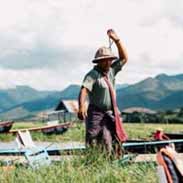Last Ice Age Flashcards, test questions and answers
Discover flashcards, test exam answers, and assignments to help you learn more about Last Ice Age and other subjects. Don’t miss the chance to use them for more effective college education. Use our database of questions and answers on Last Ice Age and get quick solutions for your test.
What is Last Ice Age?
The Last Ice Age is a period of time that began approximately 110,000 years ago and lasted until about 11,700 years ago. During this time, large areas of the Earth were covered with glaciers and widespread cold weather affected many areas. The Last Ice Age was caused by a drop in global temperatures due to changes in Earth’s orbit around the sun and other factors. This period saw dramatic changes in the environment, including extinction of species as well as movements of human populations across continents.The climate during the Last Ice Age was much colder than it is today and glaciers were prevalent in many parts of Europe, North America and Asia. These icy masses covered much of Canada, northern Europe and even reached down into the United States. In some cases they were more than three miles thick. As these sheets moved southward they changed landscapes dramatically by eroding away mountainsides or burying vast tracts under deep layers of ice. This resulted in huge lakes being formed which are still visible today such as Lake Michigan or Lake Superior on North America’s Great Lakes chain.The impact on people living during this time was profound; large portions of their territories became uninhabitable due to extreme cold while others sought refuge further south where food sources could be found more easily like fish or game in warmer climates such as Africa or Southeast Asia. People also adapted their lifestyles to suit the new environment; for instance some tribes turned from hunting to fishing or from gathering wild grains to farming crops such as maize which could survive even when blanketed with snow for months at a time. The effects of these changes can still be seen today; for example, it is believed that European horses developed shaggy coats during this period because their ancestors had adapted to life with less sunlight penetrating through thick layers of cloud cover associated with glacial eras like those experienced during the last ice age. It has also been suggested that our modern day landscape is largely shaped by glacial erosion processes which have created everything from sea-level valleys and mountain ranges like The Rockies all thanks to ancient glaciers hundreds-of-thousands years ago. In conclusion, it can be said that The Last Ice Age had a major impact on our planet’s history both environmentally and socially transforming landscapes over thousands of years while forcing humanity into adapting its own behaviours so that we might survive whatever Mother Nature threw our way.
















